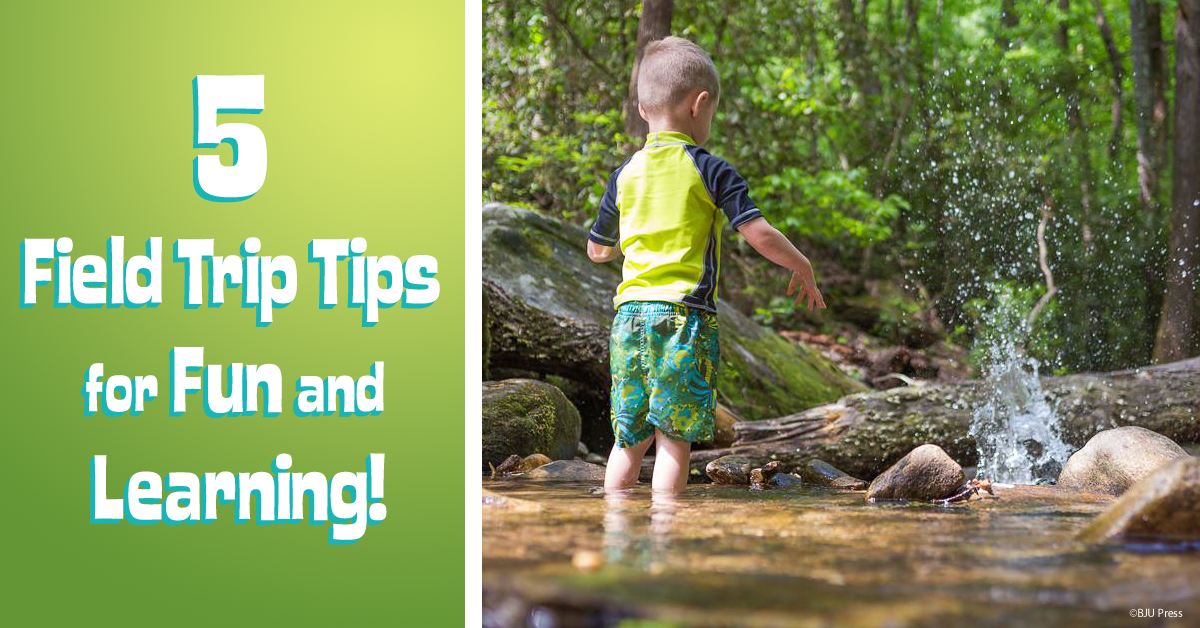Ask any child what he or she remembers most about the school year, and the answer will probably not include desks, worktext pages, or textbooks. I know my own memories as a homeschooled child don’t involve a lot of those things. Instead, I remember the extraordinary days—the day we took off school in the middle of an Illinois winter to go ice skating after watching the 1998 Winter Olympics™, the day we spent at the Museum of Science and Industry in Chicago, and the day we spent at a wildlife reserve learning about animals native to the Midwest prairie lands. In other words, I remember the field trips.

Field trips are an important part of any homeschooling experience. Children of any age can benefit from the opportunity to see and experience new things. But before you start filling up your homeschool calendar with field trips, consider these tips
1. Choose a destination that fits the maturity level of your children.
For young children, consider visiting places where they can see something happen (like candy-making) or touch something (like a fire truck or a baby lamb)—someplace they don’t have to be particularly still or quiet. Although older children might greatly benefit from a trip to a history or art museum, young children would likely find such an outing tedious.
Also, be aware that many planetariums, museums, and botanical gardens may confront your child with nonbiblical worldviews such as evolution, materialism, or liberalism. Before you go, be prepared to help your children think biblically about these issues, but remind them to be gracious and polite to the staff and other visitors who hold these views.
2. Remember that field trips are supposed to be fun.
Don’t stress your children out by threatening to give them a test after a field trip experience or loading them down with pages of questions to answer. Instead, consider making a field trip journal or simply ask your children basic questions such as “What was your favorite thing about the trip?” or “What is one thing that you learned today?”
3. Avail yourself of local and inexpensive options.
Field trips don’t have to be expensive or time consuming. When my family moved to central Illinois in the mid-1990s, we were surrounded by farmland and were hours away from big tourist attractions. Therefore, most of our field trips were local—and often free. We toured the local library, a local fast-food restaurant, and the railroad yard. We identified trees in a local arboretum and went on nature walks. Call around to local businesses to find out which ones offer tours. To keep costs low, consider coordinating a field trip day with another homeschooling family in order to get group rates.
4. If possible, use field trips to reinforce the content your child has already studied.
Hands-on experiences will help your child retain knowledge and may even provide the “spark” he or she needs to study something further. My husband often relates how his love for history grew out of visiting many American history sites during his high school years. My now second-grader benefited greatly from visiting Jamestown Settlement (the living history site, not the actual site) after studying Jamestown in the 3rd edition of Heritage Studies 1. She was fascinated with early Native American life for weeks afterwards.
5. Be over-prepared.
Spontaneous field trips may sound fun, and sometimes they do work. However, planning ahead will save you and your children from potential disappointment. I’ll never forget the day my mother and I planned to take my children to a petting zoo for the afternoon. We packed a picnic lunch and traveled almost forty-five minutes only to find out that our destination was closed for the day.
So do your homework. Know exactly where you’re going and whether you need to make reservations. Call to confirm the trip a couple of days in advance. You might want to even make a Plan B in case it rains.
Now what? Perhaps the hardest part of all: loading the kids up in the car and hitting the road. I know how hard it is to go anywhere when you’re a homeschool mom, but it will be worth it—I promise! Enjoy seeing the spark of excitement in your child’s eyes. Treasure the flood of words that will come as they recount the wonders of new discoveries. Savor the time away from the textbooks and assignments. Make some memories. But be prepared to answer the inevitable question: “When will we have another field trip?”
The Olympics is a trademark of the International Olympic Committee (IOC).